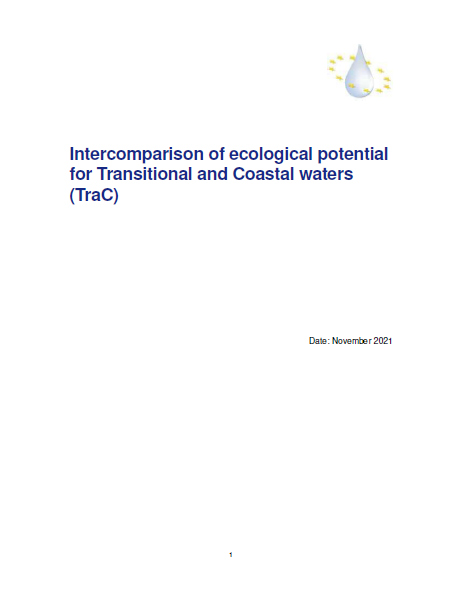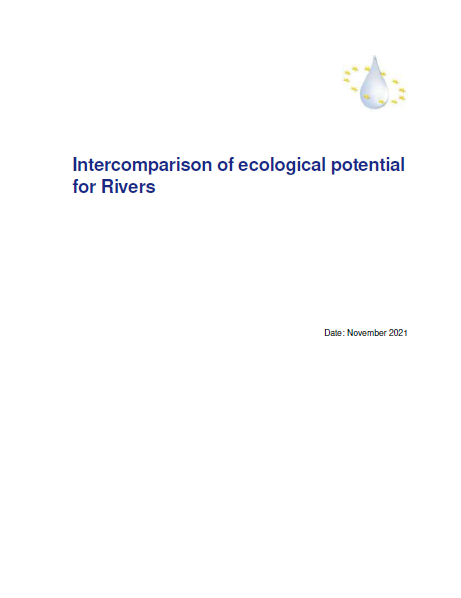Intercomparison of Ecological Potential for Lakes and Reservoirs
- Publication
- Citation
Wolfram, G., Konecny, R., Kampa, E., 2021. Intercomparison of ecological potential for Lakes and Reservoirs. Vienna, Berlin: Environment Agency, DWS Hydro-Ökologie, Ecologic Institute.
Wolfram, G., Konecny, R., Kampa, E., 2021. Intercomparison of ecological potential for Lakes and Reservoirs. Vienna, Berlin: Environment Agency, DWS Hydro-Ökologie, Ecologic Institute.
- Language
-
English
- Authorship
-
Georg Wolfram (DWS Hydro-Ökologie)Robert Konecny (Environment Agency, Austria)
- Credits
The overall process of the intercomparison was supported and guided by the GEP core group: Martina Bussettini (Italian Institute for Environmental Protection and Research, Italy), Sebastian Döbbelt-Grüne (German Working Group on water issues of the Federal States and the Federal Government – LAWA, Planungsbüro Koenzen, Germany), Wouter Van de Bund (Joint Research Center of the European Commission), Katarina Vartia (Swedish Agency for Marine and Water Management, Sweden), Jeanne Boughaba (DG ENV, European Commission), Jan Brooke (Navigation Task Group; Jan Brooke Environmental Consultant Ltd.) We wish to thank all national experts who completed the European Questionnaire on intercomparison of Ecological Potential of HMWB – Questionnaire B "Lakes/Reservoirs". Their responses to the questionnaire served as the main source of information for this report.
- Funding
-
European Commission, Directorate-General Environment (DG Environment), International - Published by
- Year
- Dimension
- 95 pp.
- Project
- Project ID
- Table of contents
-
Click to show full table of contents
1 Introduction
1.1 Background
1.2 Aims of the intercomparison
1.3 Purpose and scope of the report
1.4 Structure of report
2 Questionnaire on Intercomparison of Ecological Potential
2.1 Scope of questionnaire
2.2 Structure of the intercomparison questionnaire
2.3 Responses from European countries
3 Examples/case studies on intercomparison of ecological potential for lakes
4 Overview of methods
5 Pre-step. Designation of HMWB & information from earlier planning cycles
5.1 Introduction to step
5.2 Key findings of the intercomparison
6 Definition of MEP
6.1 Step A. Identification of closest comparable water category
6.1.1 Introduction to step
6.1.2 Key findings of the intercomparison
6.2 Step B1. Identify mitigation measures relevant to each of the hydromorphological alterations and ecologically effective in the physical context of the water body
6.2.1 Introduction to step
6.2.2 Key findings of the intercomparison
6.3 Step B2. Exclude mitigation measures with significant adverse effect on use or wider environment
6.3.1 Introduction to step
6.3.2 Key findings of the intercomparison
6.4 Step B3. Select most ecologically beneficial (combination of) measures taking into account need to ensure best approximation to ecological continuum
6.4.1 Introduction to step
6.4.2 Key findings of the intercomparison
6.5 Step C. Derivation of hydromorphological conditions for MEP
6.5.1 Introduction to step
6.5.2 Key findings of the intercomparison
6.6 Step D. Derivation of physico-chemical conditions for MEP, taking into account the closest comparable water body type
6.6.1 Introduction to step
6.6.2 Key findings of the intercomparison
6.7 Step E. Derivation of BQE conditions for MEP
6.7.1 Introduction to step
6.7.2 Key findings of the intercomparison
7 Definition of GEP
7.1 Step F. Derivation of BQE conditions for GEP
7.1.1 Introduction to step
7.1.2 Key findings of the intercomparison
7.2 Step G. Derivation of supporting quality element conditions for GEP
7.2.1 Introduction to step
7.2.2 Key findings of the intercomparison
7.3 Step H. Identification of mitigation measures for GEP
7.3.1 Introduction
7.3.2 Key findings of the intercomparison
8 Implementation of measures to achieve GEP
8.1 Monitoring to assess whether GEP is being achieved
8.1.1 Introduction to step
8.1.2 Key findings of the intercomparison
8.2 Are there GEP measures that are disproportionally expensive or infeasible?
8.2.1 Introduction to step
8.2.2 Key findings of the intercomparison
8.3 Implement GEP measures and monitor effects on BQEs and supporting quality elements
8.3.1 Introduction to step
8.3.2 Key findings of the intercomparison
9 Lessons learned by countries on their methods
9.1 Lessons learned from methods application
9.2 Strengths and weaknesses of methods
9.3 Needs for further guidance
10 Key conclusions on the intercomparison of the definition of ecological potential for Lakes/Reservoirs
11 References
Annex 1: Key references and sources to the methods reported
Annex 2: Empty questionnaire - Keywords
-
ecological potential, lakes, reservoirsEurope
Kampa, E., Rouillard, J., 2021. Intercomparison of ecological potential for Rivers. Berlin, Ecologic Institute.
Cleveringa, J., Kampa E., 2021. Intercomparison of ecological potential for Transitional and Coastal waters (TraC). Amersfoort, Berlin: Arcadis, Ecologic Institute.

